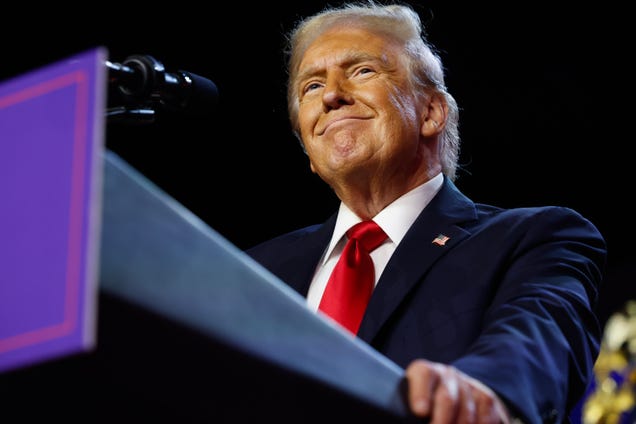Donald Trump has unambiguously positioned himself as a pro-business slasher of red tape. As he prepares to return to the White House for a second term, the financial sector is ready for a new era of more lax regulations and oversight — and the windfall that could come with it.
The former and now future president has long pushed for scaling back regulations across industries. For banks, that will ease what had been growing concerns over antitrust scrutiny and looming capital requirements that have slowed both potential investment banking and lending revenues.
Wells Fargo (WFC) analyst Mike Mayo said in a research note last week that Trump’s win will be a “regulatory game changer” for the banking sector. The new Trump administration could mean “more free markets, less harsh oversight,” and reduced regulatory risk, Mayo wrote.
All that would help drive investment banking revenues, loan growth, and a more pro-business attitude to bolster banks’ bottom lines.
Once Trump takes office again in January, as many as eight regulatory agencies could see “day 1 leadership changes,” analysts at investment bank KBW (SF) said in a research note. That could lead to a “lighter regulatory touch” that would benefit banks, consumer finance firms, brokers, and title insurance companies, they said.
Shakeups on the horizon include potentially replacing Federal Trade Commission chair Lina Khan, the Department of Justice’s antitrust division chief Jonathan Kanter, and Consumer Financial Protection Bureau director Rohit Chopra.
Trump’s victory casts particular doubt on the future of new banking requirements known as Basel III Endgame, which would force big banks to keep more cash on hand. The international rules are designed to strengthen banks’ ability to handle shocks, with regulators aiming for a mid-2025 rollout.
Brian Mulberry, client portfolio manager at Zacks Investment Management, said Trump’s most likely policy change term will be to pare back any additions to capital requirements.
“I think Basel III ends up getting modified to encourage, especially larger institutions, to lend more to try and privatize the growth in this particular cycle,” Mulberry said in an interview.
Big banks are currently required to hold a 4.5% capital ratio — a key store of cash banks keep on hand to cover losses and other hits. The rules have already been diluted from their original form, which initially proposed raising capital requirements by 19% for banks with more than $100 billion in assets. In September, regulators announced a modified proposal that would require just a 9% increase in capital levels, following considerable pushback from top U.S. bankers.
It wouldn’t be the first time Trump has relaxed bank regulations. In 2018, Trump signed legislation that raised the threshold for banks to be deemed too important to the financial system to fail, from $50 billion in assets to $250 billion.
That meant that more small- and medium-sized institutions no longer had to undergo stress tests or submit “living wills” — contingency plans outlining how financial institutions would manage a bankruptcy or other failures. Those safeguards had originally been put into place to protect both consumers and banks in the aftermath of the 2008 financial crisis.
The Trump-era rollbacks were thrust into the spotlight last year, after a review by the Federal Reserve partially blamed them for the collapse of Silicon Valley Bank and the subsequent regional banking crisis.
A bump for bank stocks
Trump’s return to the White House is, on the whole, a “significant positive for the financial sector,” according to KBW.
“While the coming weeks and months could be volatile as the dust settles,” KBW analysts said, “our prior detailed analysis highlights that a Trump administration could be a significant positive for both financial stocks and for the regulatory framework of the overall sector.”
Bank stocks quickly surged on the heels of Trump’s election victory, but fell back to earth once the initial excitement waned.
If Trump’s first term is any indication, bank stocks will benefit from his second. The banking sector returned almost 30% in 2017, the first year of Trump’s first presidency. That beat out the S&P 500 by several percentage points, with most big bank stocks doing even better.
When it comes to banks’ bottom line, Lawrence Kaplan, chair of the bank regulatory group at law firm Paul Hastings, said more selective regulations under Trump will help lower banks’ expenses.
“I think you’re going to start to see regulations when absolutely necessary,” Kaplan said. “There’s still a need for compliance, and there was a real focus under the Biden administration that I don’t think this is wrong, per se. But it’s almost overregulation of compliance.”
“So y














